The LC-4000 Series HPLC pumps have 3 operating pressures RHPLC – rapid (700bar), UHPLC – ultra high performance (1300 bar) and preparative (500 bar).
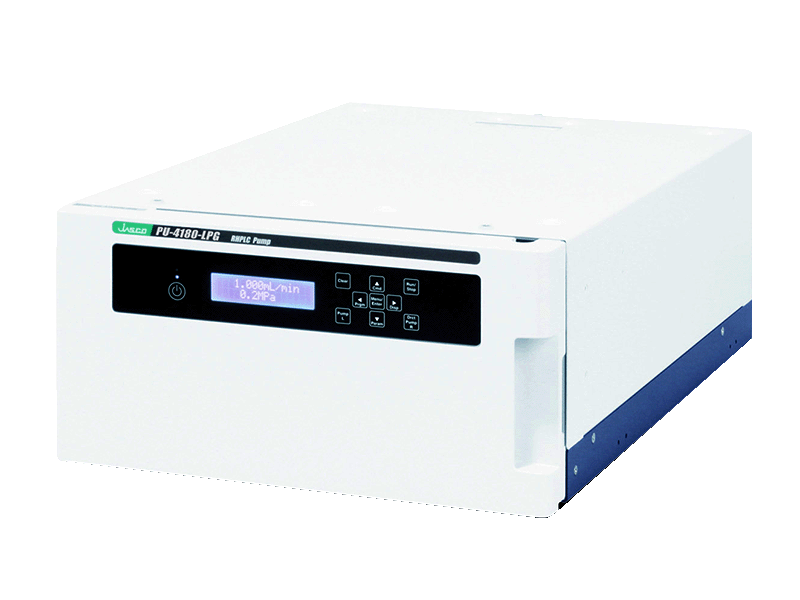
Each base unit has two expansion bays that allow an isocratic pump to be transformed into a binary or quaternary gradient solvent delivery system with internal degasser, mixer and optional solvent selection for method development.
The LC-4000 HPLC autosamplers provide a range of options to suit any sample injection requirements. Any of these products can be added to an existing system with keypad or optional RS232 control.
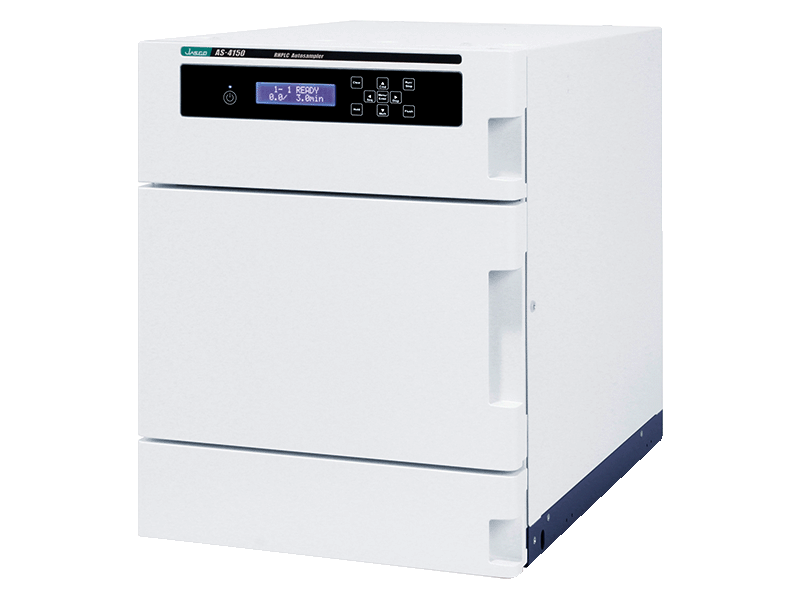
The AS-4050 is a 60 sample autosampler for use with conventional HPLC with options for analytical and semi-preparative injection volumes.
The AS-4150 and AS-4250 are high-capacity, high performance autosamplers designed for RHPLC (up to 70MPa) and UHPLC (up to 130MPa), respectively, with a minimum injection cycle-time of only 30 seconds.
The AS-4058 is a large volume injection autosampler, up to 5mL as standard (10mL, option). This autosampler is used in preparative systems with either PU-4087 (50mL/min) or PU-4088 (150mL/min) pumps.
The LC-4000 Series HPLC column ovens have been designed to provide excellent utility for a wide range of different user requirements.
All HPLC column ovens have built-in electronic cooling for controlling column temperature at sub-ambient temperatures. The CO-4062 and CO-4061 block-heater type ovens can be fitted with an optional micro-volume pre-heating unit for pre-heating the mobile phase before the column to improve resolution and peak shape.
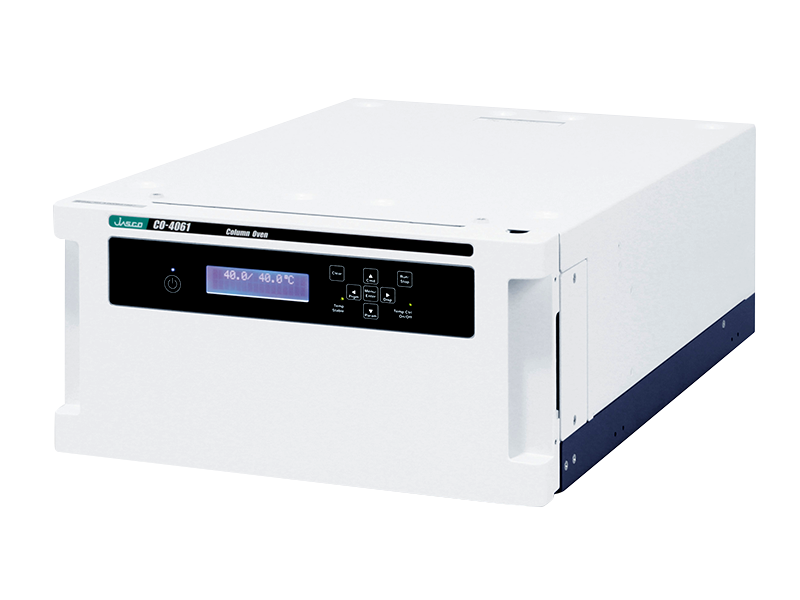
For simple requirements the stackable CO-4061 can be used with column lengths up to 200mm (or up to 300mm with an optional extension).
For RHPLC and UHPLC the CO-4062 has capacity for up to six 150 mm length columns, with optional one or two internally mounted automatic switching valves for 2 or 6 column selection.
For GPC and larger preparative columns, select either of the two high-capacity CO-4060 or CO-4065 HPLC column ovens. The CO-4060 can accommodate columns with lengths up to 300mm or larger ID preparative columns. The CO-4065 can accommodate up to 10 columns with lengths up to 300mm and a pair of column selection valves is included as standard.
The RO-2068 reaction oven is used for high temperature post-column sample processing with capacity for columns and reaction coils.
With JASCO’s long history of spectrometer development, you will find that each detector is well designed; these next generation detectors employ the latest optical and electronic technologies for high sensitivity, excellent stability and easy maintenance.
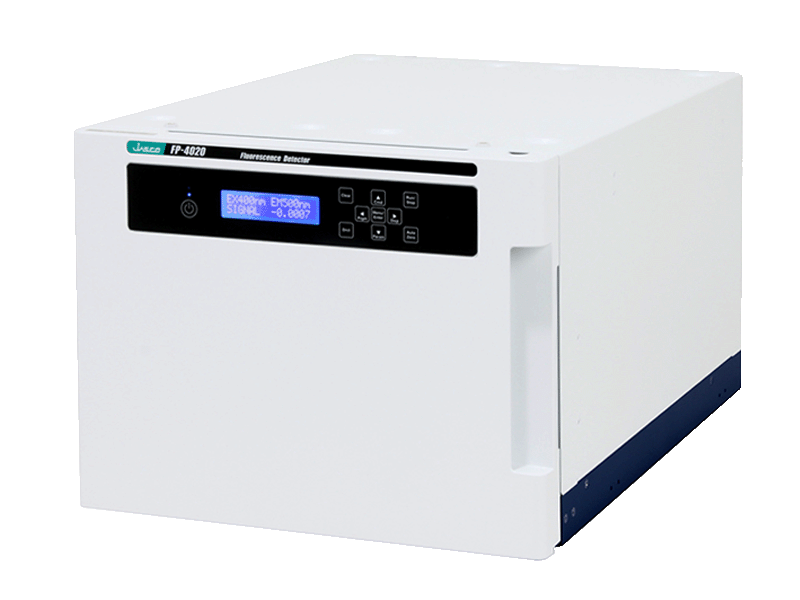
The UV-4070 (190 – 900 nm) and UV-4075 (190 – 600 nm) UV-visible HPLC detectors both use an advanced Czerny-Turner monochromator with dual wavelength and scanning functions. Baseline change due to refractive index is minimized by the flow cell design, and fluctuation from changes in environmental and lamp temperature are reduced with a regulated lamp housing and temperature controlled cell.
The LC-4000 Series includes three PDA detectors. The MD-4017 is a simple replacement for a single wavelength detector, the MD-4015 is the workhorse for UV-Visible detection in the range 200 to 650 nm and the MD-4010 has a wide wavelength range. When used with ChromNAV 2.0 CDS the PDA detector offers multi-functional analysis with a variety of functions such as spectral analysis, library search for peak identification, peak purity and multi-wavelength quantitation.
The FP-4020 and FP-4025 fluorescence detectors have been designed for the pursuit of extreme sensitivity. A complete redesign of the optics and electronics, as well as removing the effects temperature fluctuation with a new temperature regulated cell body has led to the highest sensitivity with stable detection.
The RI-4030/35 refractive index detectors include an optical system mounted in a precise temperature-regulated housing to eliminate the influence of changes in ambient temperature. Both detectors are fully stable just one hour after powering on.
The CD-4095 is a unique HPLC CD detector for measuring circular dichroism developed from the market leading J-Series circular dichroism spectropolarimeters. Optically active compounds with a chromophore close to a chiral center may absorb circularly polarized light, which can be detected with excellent sensitivity and selectivity. When chiral compounds are measured using a UV-Visible detector, the d- and l- enantiomers cannot be distinguished even when separated by a chiral column, however the CD-4095 CD detector makes it possible to positively distinguish between the d- and l- enantiomers by measuring their positive and negative peaks.
The OR-4090 chiral detector measures the angle of rotation of plane polarized light caused by optical active isomers and is useful for chiral compounds with no absorption. The OR-4090 uses a high intensity Hg-Xe arc lamp (150 W) providing a strong output in the UV-Visible region where the largest optical rotations offer the highest sensitivity. The wide wavelength range from 350 – 900 nm also allows measurement of a wide variety of samples.
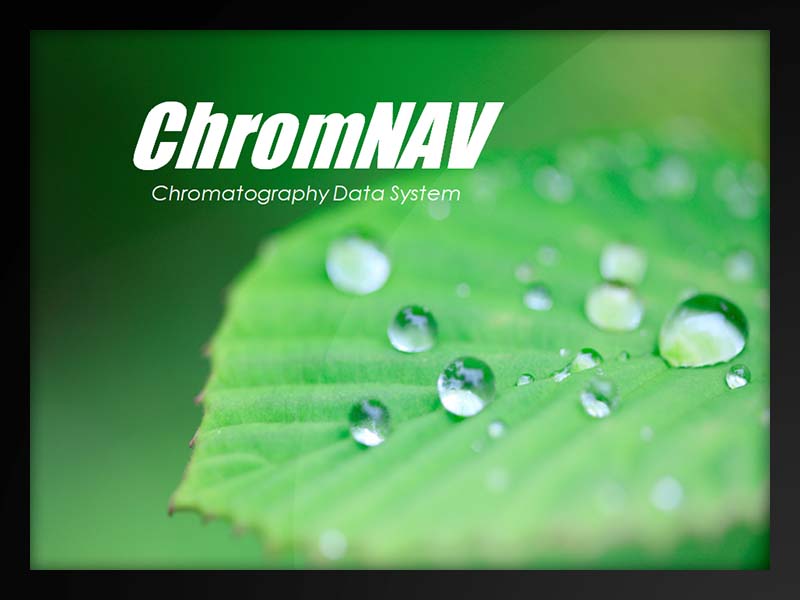
All raw data is protected and saved, which can then be analyzed and re-analyzed, reported and saved with both the raw data and any data processing from the user’s analysis.
A comprehensive audit trail records the acquisition method along with a history of instrument performance indicators in each sample data file, which provides the user a snap-shot of the condition of the system during the run and can warn about requirements for impending maintenance.
ChromNAV 2.0 offers flexible system control and data acquisition with options for 2D (or up to 4D) gradient control and multi-zone oven control (up to 3) for method development. Solvent and column selection has been increased to include up to 10 positions for both. During acquisition, the run-time for a chromatogram can be increased to capture later eluting peaks that may exceed the set run-time.
During acquisition a ‘known’ chromatogram can be overlaid for visual comparison with the currently separation, as a quick indicator to the user of the reliability current separation. The fluorescence and UV-visible detectors both include the spectral scanning, which can be triggered manually, by time or by threshold. Data acquisition and analysis for PDA detectors are included as standard in ChromNAV. A newly added feature is the ability to send an automated email to your PC or smartphone with an update on the progress of the sequence.
©Jasco Europe S.R.L. (Socio Unico) Direzione e coordinamento ex. art. 2497 bis c.c. – P.I. 08609570158 | Privacy Policy | Cookie Policy | Manage consent | Realizzazione sito web: Alkimedia
| Cookie | Duration | Description |
|---|---|---|
| cookielawinfo-checbox-analytics | 11 months | This cookie is set by GDPR Cookie Consent plugin. The cookie is used to store the user consent for the cookies in the category "Analytics". |
| cookielawinfo-checkbox-necessary | 11 months | This cookie is set by GDPR Cookie Consent plugin. The cookies is used to store the user consent for the cookies in the category "Necessary". |
| CookieLawInfoConsent | 1 year | Records the default button state of the corresponding category & the status of CCPA. It works only in coordination with the primary cookie. |
| elementor | never | This cookie is used by the website's WordPress theme. It allows the website owner to implement or change the website's content in real-time. |
| viewed_cookie_policy | 11 months | The cookie is set by the GDPR Cookie Consent plugin and is used to store whether or not user has consented to the use of cookies. It does not store any personal data. |
| Cookie | Duration | Description |
|---|---|---|
| Google Maps | Google Maps is a map visualization service managed by Google Inc. and is used to integrate such contents within its pages. |